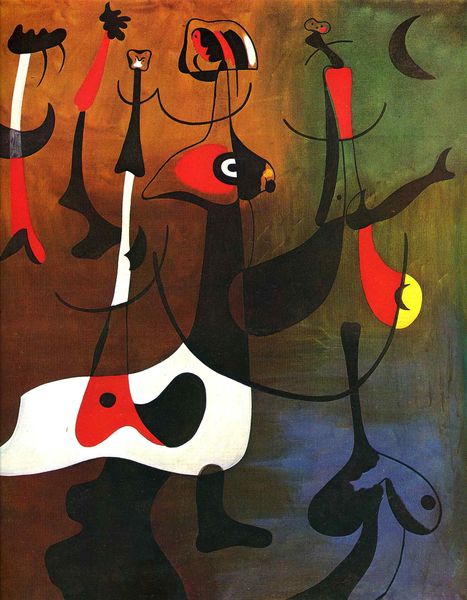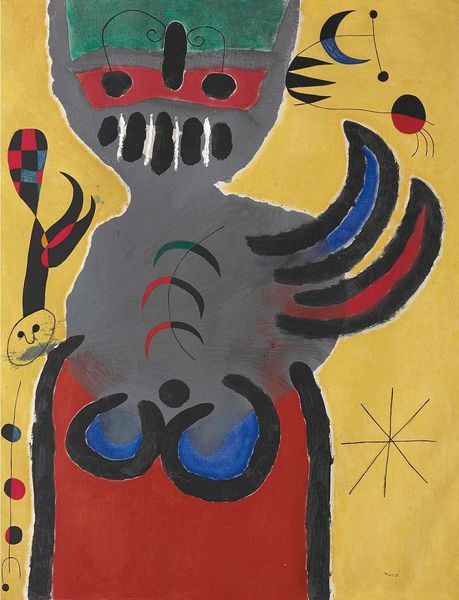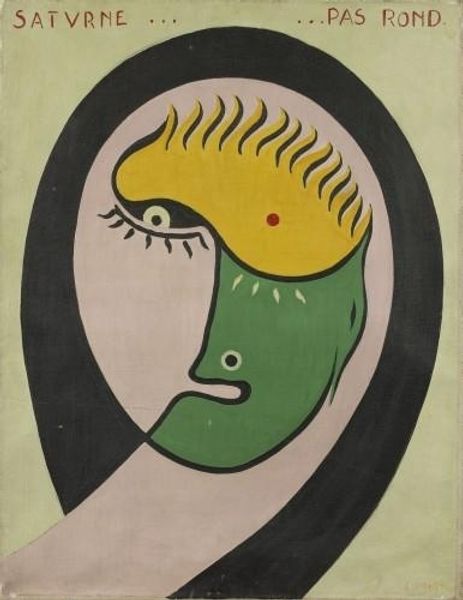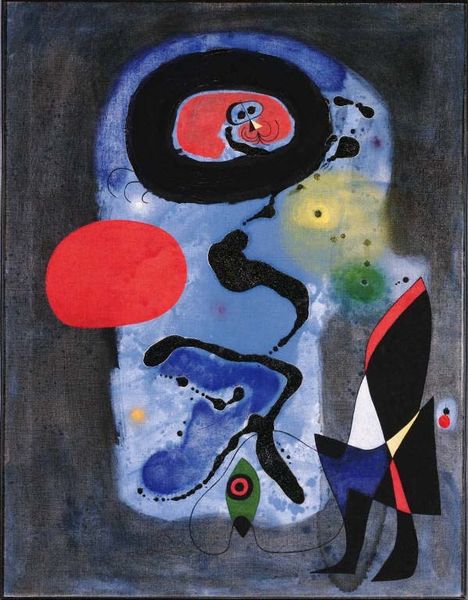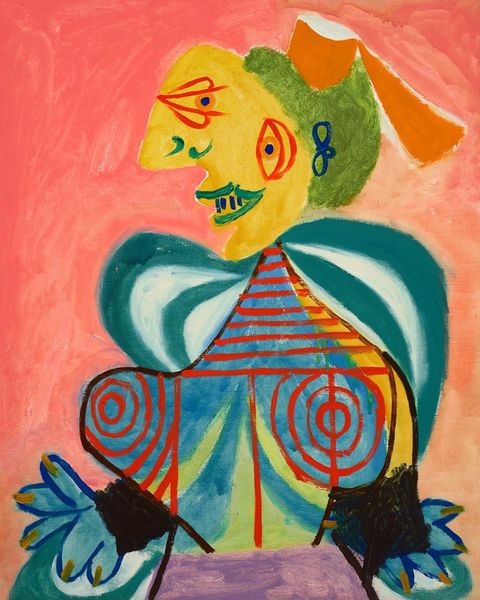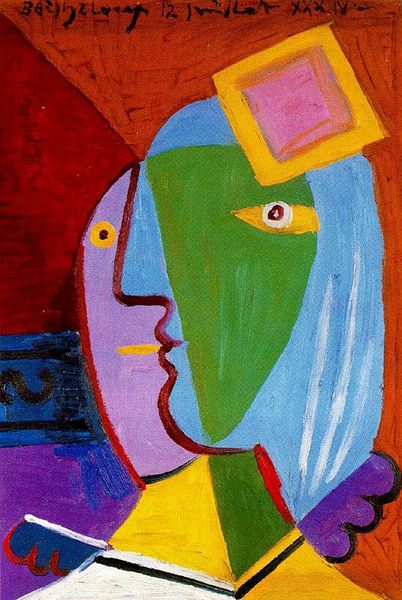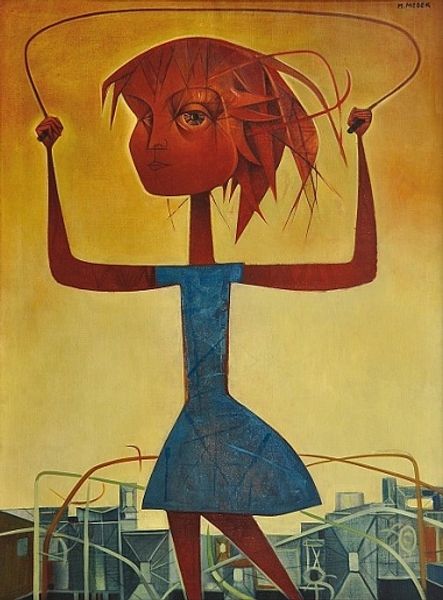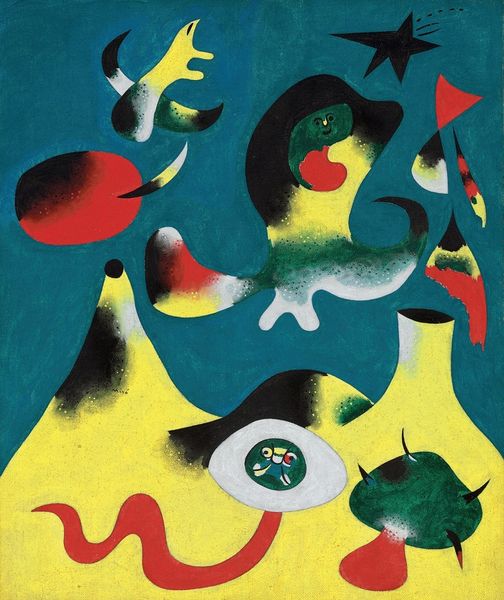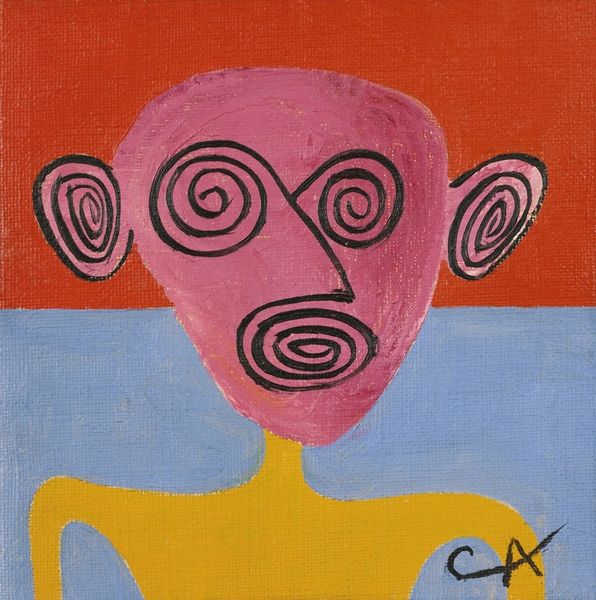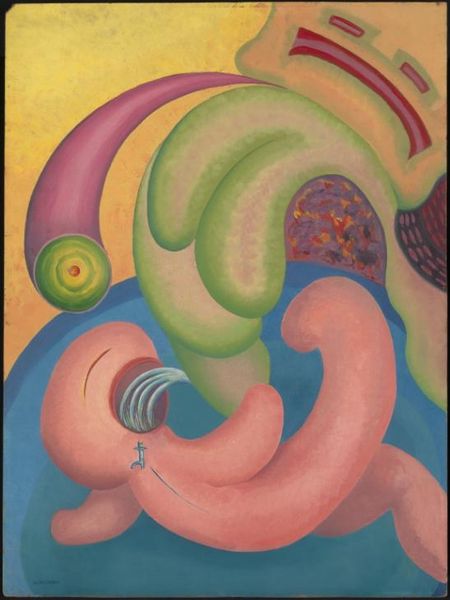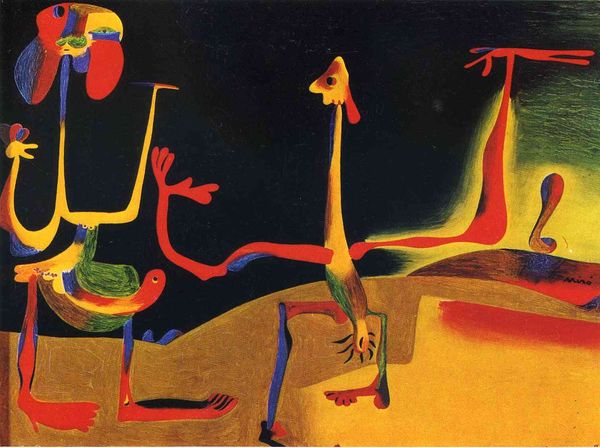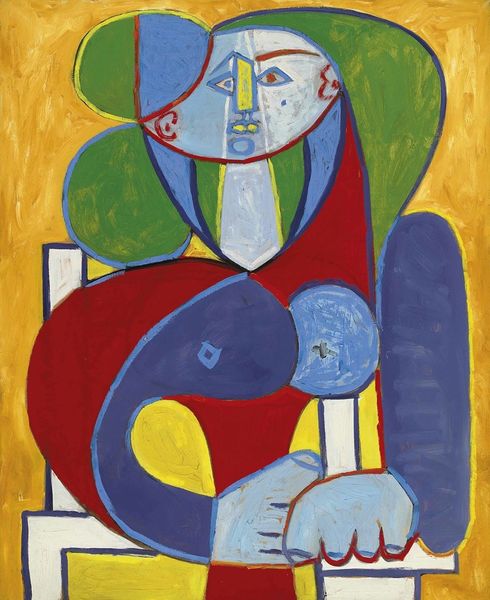
Copyright: Desmond Morris,Fair Use
Editor: Desmond Morris’s "The Agitator," from 1973, uses acrylic paint to create this… peculiar figure. There’s something almost cartoonish and unsettling about its organic shapes and piercing eyes. It makes me wonder what exactly he's meant to be agitating. What do you make of this piece? Curator: Well, looking at it through a historical lens, it’s interesting to consider how the concept of the ‘agitator’ shifted in the 1970s. Think about political activism, social unrest, the questioning of authority figures. This caricature, rendered in a style reminiscent of Naïve Art, immediately evokes those associations, doesn’t it? Editor: Definitely. The almost childlike simplicity gives it a sense of raw honesty, but the title hints at a more complex underlying message. Are we meant to see the figure as a positive force or something more sinister? Curator: That ambiguity is key, and perhaps intentional. Morris, an anthropologist by training, was likely aware of how images are used to manipulate public opinion. This ‘agitator,’ with its strange features, reflects anxieties surrounding propaganda and the power of persuasion, doesn’t it? It is an easily digestible image commenting on more complex issues. Editor: I hadn’t thought of that. So the seemingly playful aesthetic could be masking a deeper commentary on the era's political climate? Curator: Precisely! And by presenting it in this visually accessible way, it invites broader audiences to engage with these critical issues. But it could be seen that someone like Morris creating art could bring into question who has a right to comment on historical or cultural events. Does the historical period in which it was produced give a lens into the world’s culture at that time? Editor: That's fascinating. I came in seeing a bizarre image, but I'm leaving with so much more to think about regarding art, social commentary, and how cultural forces influenced artistic creation. Curator: Exactly. That’s the beauty of viewing art through a historical perspective.
Comments
No comments
Be the first to comment and join the conversation on the ultimate creative platform.
